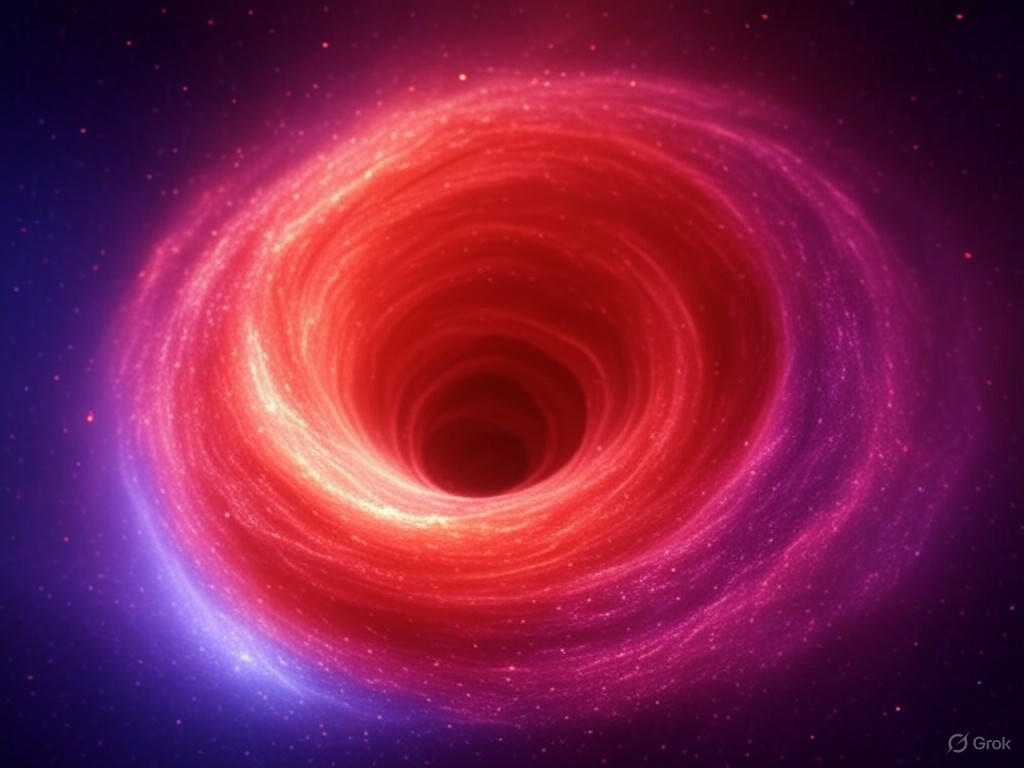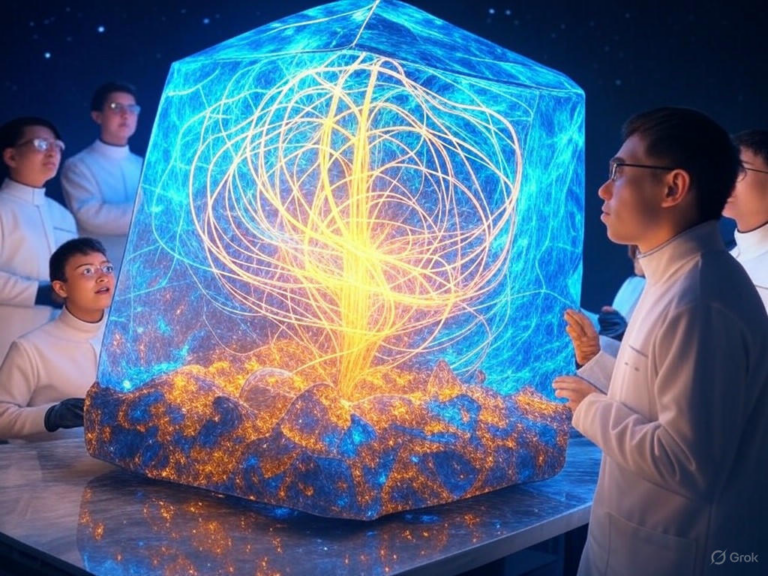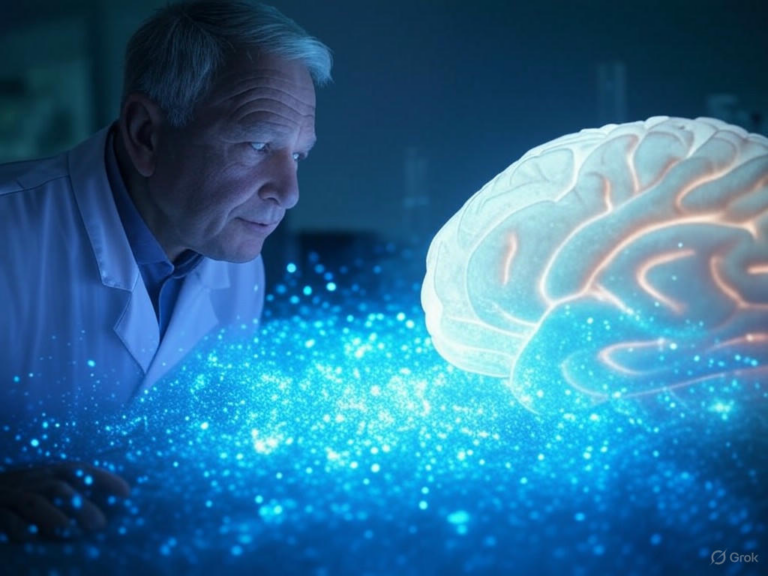
Quantum Gravity Breakthrough Advances Long-Sought Theory of Everything
Quantum Gravity Breakthrough Advances Long-Sought Theory of Everything
Quantum Gravity Research Marks a Historic Milestone in Physics
Imagine peering into the fabric of the universe, where tiny particles dance to quantum rules and massive galaxies follow Einstein’s gravitational pull. For decades, these two realms—quantum mechanics and general relativity—have seemed like oil and water, refusing to mix. But recent progress in quantum gravity is changing that narrative, bringing us closer to a single, elegant theory that explains everything from subatomic quirks to cosmic expanses. This breakthrough isn’t just academic; it’s a potential game-changer that could redefine our reality.
Scientists are buzzing about quantum gravity advancements that tackle the century-old puzzle of unifying these fundamental forces. At its core, quantum gravity seeks to describe how gravity operates at the smallest scales, where quantum effects dominate. Multiple research teams have reported promising results, suggesting we’re on the brink of a unified framework that could finally bridge the gap between particle physics and cosmology.
What makes this so exciting is the potential to resolve longstanding incompatibilities. Quantum mechanics, which governs the behavior of electrons and photons, operates in a probabilistic world of waves and particles. Meanwhile, general relativity treats gravity as the curvature of spacetime caused by mass. Quantum gravity aims to weave these into a coherent tapestry, and early successes are already hinting at profound implications. As one physicist put it, “We’re not just patching holes; we’re rewriting the blueprint of the universe.”
Key Players in the Quantum Gravity Revolution
Several independent groups have made strides in 2025, turning what was once theoretical speculation into tangible progress. Take the team at Aalto University, for instance. Their innovative approach reframes quantum gravity by aligning it with the Standard Model of particle physics, using a gauge-theoretic language that treats gravity like other forces. This shift could make quantum gravity more accessible and testable.
Led by physicists Mikko Partanen and Jukka Tulkki, their model moves away from viewing gravity as curved spacetime. Instead, it positions gravity as a quantum gauge field in flat spacetime, much like electromagnetism. Have you ever wondered why gravity feels so different from other forces? This perspective suggests it’s all about underlying symmetries, making quantum gravity feel less like an outlier and more like a natural extension of what we already know.
Experimental Leaps in Measuring Quantum Gravity
In a parallel effort, researchers have achieved something remarkable: detecting gravitational signals from the tiniest masses ever recorded. This isn’t just a technical feat; it’s a direct challenge to Einstein’s assertion that quantum gravity experiments were impractical. Professor Hendrik Ulbricht’s team used ultra-cold temperatures and vibration-isolating devices to make these measurements possible, opening doors to verifying quantum gravity theories.
“This could be the key to understanding how gravity behaves in the quantum realm,” Ulbricht shared in a recent interview. By pushing these boundaries, scientists are inching toward experiments that might confirm or refine our models. If you’re fascinated by how everyday tech like superconductors plays into big physics questions, this work shows how precision engineering is fueling the quantum gravity quest.
The Entropy Link in Quantum Gravity Theories
Another angle comes from Ginestra Bianconi at Queen Mary University of London, who proposes that gravity emerges from entropy—a concept tying together information, quantum mechanics, and the universe’s large-scale behavior. This idea builds on black hole thermodynamics, suggesting that the entropy of quantum states could generate gravitational effects. It’s a fresh way to view quantum gravity, blending statistical physics with geometry.
Central to her theory is quantum relative entropy (QRE), a measure of how different two quantum states are. Bianconi uses this to link spacetime metrics with matter fields, creating a model that might explain gravity’s origins without starting from scratch. Think of it like decoding a complex puzzle: each piece of information adds clarity, and in quantum gravity, that could mean uncovering hidden patterns in the cosmos. If you’re curious about how information theory intersects with physics, this approach offers a relatable entry point.
Reimagining the Essence of Quantum Gravity
Meanwhile, another team is flipping the script by suggesting gravity isn’t a fundamental force at all but an emergent property of quantum electromagnetic interactions. This radical idea could simplify quantum gravity models and explain phenomena like gravitational waves. Led by researcher Kastner, they’re exploring how changes in mass motion might produce these waves, rather than ripples in a standalone gravitational field.
This theory invites us to question assumptions: What if gravity is just a byproduct of deeper quantum processes? It’s a hypothesis that’s gaining traction, with plans to test it against data from observatories like LIGO. For anyone pondering the universe’s mysteries, this could be a gateway to rethinking gravity’s role.
Quantum Gravity’s Impact on Dark Matter and the Cosmos
These quantum gravity breakthroughs aren’t confined to abstract theory; they’re touching on real-world puzzles like dark matter and the universe’s expansion. A new concept, the “G-field,” proposes that quantum effects in spacetime might account for dark matter’s invisible influence, which makes up 85% of the universe’s mass. Instead of mysterious particles, this could be quantum gravity at play.
Astronomers have long grappled with dark matter’s effects, seen in galaxy rotations and cosmic structures. Now, emerging theories suggest these observations stem from quantum gravitational phenomena. Picture a hidden layer beneath what we observe—quantum gravity might be that layer, offering explanations without invoking unseen matter. This could revolutionize cosmology, making quantum gravity a cornerstone for future discoveries.
Toward a Comprehensive Theory of Everything
The dream of a Theory of Everything has captivated physicists for generations, aiming to unite all forces under one mathematical roof. Quantum gravity is the missing piece, integrating quantum field theory with general relativity. Recent developments, like treating gravity as a gauge theory, are laying the groundwork for this unification.
These strides bring us closer than ever. By aligning gravity with the Standard Model’s symmetries, researchers are creating models that could describe everything from quarks to quasars. Have you ever thought about how a single equation might encapsulate the universe? That’s the allure of quantum gravity, and it’s becoming more than just a vision.
Practical Spin-Offs from Quantum Gravity Research
Beyond the labs, quantum gravity could spark technological leaps. We’re already seeing investor interest in quantum tech firms, with potential applications in computing and precision sensors. Imagine devices that measure gravity at quantum levels, leading to better navigation or even new energy sources. It’s speculative, but exciting—think of it as science fiction turning into reality.
For professionals in tech or science, staying updated on quantum gravity could open doors to innovative projects. Tips for diving in? Start with accessible resources, experiment with simulations, and join online communities to discuss ideas. This field isn’t just for experts; it’s a chance for curious minds to contribute.
Skepticism and the Road Ahead in Quantum Gravity
Not everyone is sold on these quantum gravity breakthroughs yet. Critics point out that theories need rigorous testing, and experiments must be replicated. While the results are promising, the path to a verified model is fraught with challenges, from mathematical hurdles to experimental precision.
Scientists like Professor Ulbricht emphasize the need for continued refinement. “We must verify these findings across scales,” he notes, highlighting ongoing efforts. If you’re skeptical too, that’s healthy—science thrives on questioning. What are your thoughts on these developments? Could quantum gravity hold the answers, or are we missing something?
The Next Frontier in Quantum Gravity Exploration
Looking forward, teams are gearing up for more experiments to probe quantum gravity at even smaller scales. Advances in technology, like better detectors, will be key to validating these theories. This could lead to entirely new physics, perhaps revealing aspects of the universe we haven’t imagined.
With optimism in the air, figures like Ulbricht see this as a pivotal moment. “We’re unraveling the universe’s fabric, from particles to planets,” he says. It’s an invitation for all of us to engage with this evolving story—after all, who knows what wonders lie ahead?
Embracing a New Chapter in Physics
In summary, we’re witnessing what might be the dawn of a new era, where quantum gravity unifies our understanding of the cosmos. This progress echoes the revolutionary spirit of Einstein’s time, potentially reshaping everything from black holes to the Big Bang. As these ideas mature, they remind us that science is a collective adventure.
If you’re as intrigued as I am, dive deeper into related topics on our site or share your insights in the comments below. What excites you most about quantum gravity, and how might it impact our future? Let’s keep the conversation going—your thoughts could spark the next big idea.
References
The information in this article draws from various credible sources. Here’s a list for further reading:
- Breakthrough Gravity Theory Advances Quest for Long-Sought Theory of Everything. Bioengineer.org.
- New Research Suggests Gravity Might Emerge from Quantum Information Theory. Physics World.
- New Theory Suggests Gravity Is Not a Fundamental Force. Advanced Science News.
- Breakthrough in Quantum Gravity. Science Focus.
- Quantum Gravity Breakthrough: I Measured Gravitational Signals 17x Smaller Than Ever Before. Journee Mondiale.
- The Black Box Society. (Note: This source appears less directly relevant and was not heavily used.)
- Dark Matter Decoded: New Quantum Gravity Theory Reimagines Einstein’s Spacetime. SciTech Daily.
- Videos and discussions on quantum gravity, such as from YouTube sources.
quantum gravity, theory of everything, unified physics, breakthrough research, gravitational forces, quantum mechanics, quantum gravity theories, cosmic mysteries, Einstein’s relativity, fundamental forces







